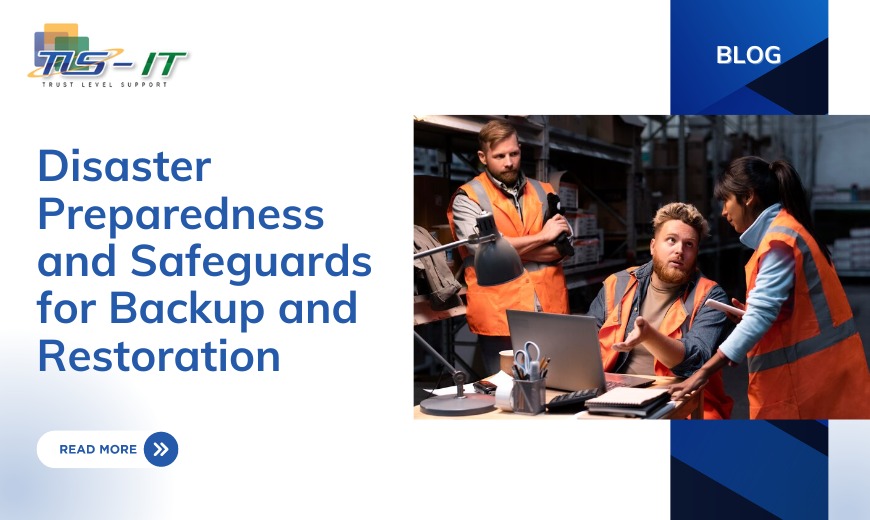The recent floods in the UAE have shown us how unpredictable disasters can be. They can hit hard and fast, causing significant problems for businesses. That’s why it’s so important to have a plan in place to protect your business.
In this blog, we’re going to talk about how backup and disaster recovery (BDR) solutions can help keep your business safe. These solutions are like safety nets, ready to catch you if something goes wrong.
We’ll look at how floods and other disasters can affect businesses in the UAE. By understanding the risks, we can see why having a plan is crucial.
We’ll also talk about how BDR solutions work. They help you prepare for disasters, respond quickly when they happen, and recover afterward. It’s like having a superhero on your team, ready to save the day when trouble strikes.
So, join us as we learn how to protect our businesses and bounce back from disasters stronger than ever.
Protecting Your Business
The Basics of Disaster Recovery Planning In all the talk about keeping your business safe from cyber threats, one crucial aspect often gets overlooked: backup and disaster recovery (BDR) solutions. The truth is, cyber attacks are a matter of “when,” not “if.”
So, is your company ready for when things go wrong in your IT setup?
Having strong BDR solutions in place is key. They not only guard against cyber attacks but also shield your data from hardware failures, natural disasters, and human errors. A reliable managed IT services provider (MSP) can help you find the right mix of tech solutions to safeguard your business.
But disaster preparedness isn’t just about IT.
There are four main pillars to consider: Prevention, Preparedness, Response, and Recovery.

Prevention: The First Step
Preventing disasters starts with identifying risks, evaluating cybersecurity, and creating backup systems.
- Risk Assessment: Set up a plan to regularly identify and assess potential threats, both inside and outside your company. Every business faces different risks, so understanding yours is crucial. Even simple things like internet outages can disrupt your operations.
- Data Security: Work with your MSP to set up strong data security measures like encryption and access controls. Many security gaps can be closed with the right policies and maintenance.
- Network Redundancy: Build redundancy into your critical systems and infrastructure. This might mean backup hardware, power supplies, or storing data in different locations. The 3-2-1 approach (three copies of data on two different media types, with one copy offsite) is a good practice.
Why is this so important? Studies show that 40% of small businesses never reopen after a disaster, and about 60% of businesses closed due to a data breach never recover.
Preparedness: Getting Ready - The Second Step
Being prepared means planning for different types of disasters and understanding how they could affect your business.
- Business Impact Analysis (BIA): Identify and prioritize your critical business functions. Think about where they happen, how important they are, and how often you need backups. This helps you know what you need to focus on during recovery.
- Business Continuity Plan (BCP): Create a detailed plan for how your business will respond to and recover from different disasters. This includes who does what, how you communicate, and how you test the plan. Make sure everyone in your company knows the plan.
- Employee Training: Regularly train your team on disaster procedures. Make sure everyone knows their role during a crisis.
Don’t worry if this seems overwhelming. Taking the time to analyze your business and prepare for disasters is worth it. Many companies form a task force with representatives from different departments to help with planning.
Responding Effectively: The Third Step
When things go wrong, having a plan is crucial. Let’s talk about creating one for your business in the UAE. Here’s what you need to know:

- Incident Response Plan: Make a step-by-step plan for dealing with problems when they happen. This plan should cover how to figure out what’s wrong, stop it from getting worse, and respond quickly. Get your organization’s stakeholders and managed IT services provider involved to ensure the plan fits your needs and considers everyone’s perspective. Communication can be tough during emergencies, so make sure the plan is clear and specific to your organization.
- Collaborate with Experts: Your Managed Services Provider (MSP) has experience in handling crises. Work with them to incorporate best practices into your plan. Consider involving other vendors like cyber insurance providers and outsourced human resource support to cover all bases.
- Incident Response Plan:
- Make a clear, step-by-step plan for what to do when problems happen. This plan should be made to fit the different kinds of problems you might have, like cyber attacks or other threats.
- Include instructions for telling important people about the problem, checking how bad it is, and starting up the business again.
- Communications Plan:
- Talking to people during a crisis can be hard. Make a plan for how you’ll talk to your team, customers, partners, and the media.
- Remember to keep a list of everyone’s contact info and make sure you can get to it easily. Think about making templates for how to talk to people so anyone can use them.
By following these steps, you can create a strong plan to keep your business safe during tough times. Remember, being prepared is key to success.
Recovery- The Fourth Step
Recovery is the final and crucial part of making sure your business can keep going. Even if you’ve saved your important data, it won’t matter if your team can’t use it. So, it’s essential to have a plan for restoring everything back to normal.
Here's what you need to do:
Data Restoration:
- Have a clear plan for getting your data back from backups quickly. Make sure to test this plan regularly to make sure it works as it should.
- Keep your data safe while moving it around. Think about how to protect it both when it’s being backed up and when it’s being put back where it belongs.
- Be realistic about how long it might take to recover. It’s usually not a quick job, so it’s important to be patient.
System Recovery:
- Remember the plan you made for bringing back your important systems and tools? This is where it comes into play. You might need to use backup systems, put data back from backups, or even rebuild everything from the start.
- If a natural disaster happens, you might need to set up a temporary office somewhere else.
Testing Preparedness:
- It’s really important to test your plans regularly to find any problems and fix them. This includes doing full tests to make sure your team knows what to do if something goes wrong.
- Make sure to involve everyone who needs to be part of the plan, including your IT services provider.
By focusing on these four things, you can make sure your business is ready for anything that might happen.
At TLS-IT, we specialize in crafting robust Business Continuity and Disaster Recovery solutions in Dubai, meticulously designed to align with your organization’s specific requirements and objectives.
Reach out to us at (+971)43955877 for expert consultation and configuration assistance. Our committed team is at your service round the clock, providing continuous guidance and support. With a decade-long track record of delivering excellence in Business Continuity and Disaster Recovery services, we assure unparalleled reliability and quality in safeguarding your business operations.




